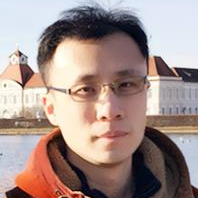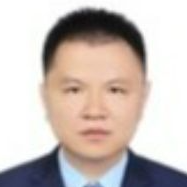Artificial Intelligence Algorithm for Remote Sensing Imagery Processing III
A special issue of Remote Sensing (ISSN 2072-4292). This special issue belongs to the section "Remote Sensing Image Processing".
Deadline for manuscript submissions: closed (29 February 2024) | Viewed by 11373
Special Issue Editors
Interests: remote sensing image processing; intelligent information processing
Special Issues, Collections and Topics in MDPI journals
Interests: remote sensing; hyperspectral image processing; machine learning
Special Issues, Collections and Topics in MDPI journals
Interests: hyperspectral remote sensing; underwater remote sensing
Special Issues, Collections and Topics in MDPI journals
Interests: deep learning; remote sensing image processing; point cloud processing; change detection; object recognition; object modelling; remote sensing data registration; remote sensing of environment
Special Issues, Collections and Topics in MDPI journals
Interests: hyperspectral image processing
Special Issues, Collections and Topics in MDPI journals
Interests: multimodal object detection and tracking
Special Issues, Collections and Topics in MDPI journals
Interests: multi-modal information extraction; image retrieval; 3D modeling
Special Issues, Collections and Topics in MDPI journals
Special Issue Information
Dear Colleagues,
Remote sensing technology is an important technical means for human beings to perceive the world, and multimodal remote sensing technology has become the mainstream of current research. With the rapid development of artificial intelligence technology, many new remote sensing image processing methods and algorithms have been proposed. Moreover, rapid advances in remote sensing methods have also promoted the application of associated algorithms and techniques to problems in many related fields, such as classification, segmentation and clustering, target detection, etc. This Special Issue aims to report and cover the latest advances and trends about the Artificial Intelligence Algorithm for Remote Sensing Imagery Processing. Papers of both theoretical methods and applicative techniques, as well as contributions regarding new advanced methodologies to relevant scenarios of remote sensing images, are welcome. We look forward to receiving your contributions.
Prof. Dr. Chunhui Zhao
Prof. Dr. Danfeng Hong
Prof. Dr. Qingsheng Xue
Dr. Mohammad Awrangjeb
Dr. Shou Feng
Dr. Nan Su
Dr. Yiming Yan
Guest Editors
Manuscript Submission Information
Manuscripts should be submitted online at www.mdpi.com by registering and logging in to this website. Once you are registered, click here to go to the submission form. Manuscripts can be submitted until the deadline. All submissions that pass pre-check are peer-reviewed. Accepted papers will be published continuously in the journal (as soon as accepted) and will be listed together on the special issue website. Research articles, review articles as well as short communications are invited. For planned papers, a title and short abstract (about 100 words) can be sent to the Editorial Office for announcement on this website.
Submitted manuscripts should not have been published previously, nor be under consideration for publication elsewhere (except conference proceedings papers). All manuscripts are thoroughly refereed through a single-blind peer-review process. A guide for authors and other relevant information for submission of manuscripts is available on the Instructions for Authors page. Remote Sensing is an international peer-reviewed open access semimonthly journal published by MDPI.
Please visit the Instructions for Authors page before submitting a manuscript. The Article Processing Charge (APC) for publication in this open access journal is 2700 CHF (Swiss Francs). Submitted papers should be well formatted and use good English. Authors may use MDPI's English editing service prior to publication or during author revisions.
Keywords
- remote sensing
- machine learning and deep learning for remote sensing
- optical/multispectral/hyperspectral image processing
- LiDAR and SAR
- ocean and underwater remote sensing
- target detection, anomaly detection, and change detection
- semantic segmentation and classification
- object re-identification using cross-domain/cross-dimensional images
- object 3D modeling and mesh optimization
- applications in remote sensing











